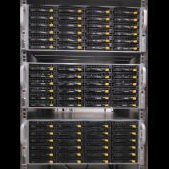Leaderboard
Popular Content
Showing content with the highest reputation since 04/11/24 in Posts
-
After another 1.5hrs of searching I finally managed to stumble across some more info, from user "frr" on superuser https://superuser.com/questions/570110/how-to-make-the-linux-framebuffer-console-narrower It really is as simple as adding video=<hres>x<vres>@<refresh> to the sysconfig! e.g. video=1600x1000@60 Leaving this hoping to help someone else in future as this took me forever! Unraid version 6.12.9.4 points
-
Every plugin, no exceptions, are checked for security issues. This doesn't mean that there isn't going to be security flaws caused by libraries utilized, but you do know that any random plugin is not going to go ahead and outright delete your media etc. Every single plugin available via Apps gets installed on my production server, with no exceptions, and a code audit is done on what is actually present instead of what may be showing on GitHub. Every single update to every plugin I am notified about (within 2 hours), and with plugins which are not maintained by a contractor of Limetech is then code audited again. Every update. And with only a few exceptions, this happens on an actual production server not on a test server. If something ever fails the checks, then everything else gets dropped (including the 9-5 job) to handle the issue. Whether that means simply getting the application out of apps temporarily and asking the maintainer / author "WTF? You can't do this", or notifying everyone with it installed via FCP about any issue, or preventing the Auto Update plugin from installing any update to the plugin, or even taken more drastic measures, provisions are in place to protect the user.. Closed source applications, whether they are plugins or containers, may be frowned upon, but are not necessarily disallowed. With plugins, the standard for open-source vs closed-source is more strict, but it is not 100% a requirement that only open source be present.4 points
-
4 points
-
Wir nutzen Keepass in der Firma. Das Browser Plugin funktioniert nicht von denen.. Dies und die langsame Performence des Servers bewegte uns nun nach glaube 5-10 Jahren oder so, zu einem andern PMGR zu wechseln. Ich kann Bitwarden (Vaultwarden) empfehlen.3 points
-
No. The whole purpose of the parity swap procedure is to replace a parity drive with a larger one and then rebuild the contents of the emulated drive onto the old parity drive that is replacing the disabled drive. It works in two phases which have to both run to completion without interruption if you do not want to have to restart again from the beginning. the first phase will copy the contents of the old parity drive onto the new (larger) parity drive. During this phase the array is never available.. when that completes the standard rebuild process starts running to rebuild the emulated drive onto the old parity drive. If you were doing this process in Normal mode the array is available but with reduced performance (as is standard with rebuilding). If running in Maintenance mode the array will become available only when the rebuild completes and you restart the array in normal mode.3 points
-
Ich meinte damit, dass Du opnsense offensichtlich virtualisierung willst. DAS ist ein no-go...zum rumspielen ganz ok, aber nicht für produktiv genutzte Netze. Ebenso die Frage nach dem Skill-Level...eine echte Firewall ist schon was anderes als ein Netz hinter NAT zu verstecken. Überlege Dir ob Du das brauchst und ob Du selbst Deine Zeit reinstecken musst (welche dann nicht für Dein Business zur Verfügung steht). My 2cents3 points
-
...es ist nur ein Netz-Segment, da wird nix geroutet. Statische IPs werden am Endpunkt(client, server, gerät) direkt eingestellt. Das oben Beschriebene geht auch mit 192.168.178.xxx statt 10.10.10.xxx2 points
-
Wunschgemäß habe ich mal bei dem Mainboard Gigabyte B760M DS3H-DDR4 den Stick auf unraid 6.12.10 upgegraded. Dann habe ich das Ganze mal gemessen (wie üblich nackt, idle, keine Festplatten, keine Steckkarten drin, RTL 1GBLink, HDMI und Key/mouse per ATEN8600 KVMoverIP) Dabei kamen folgende Werte bei raus und Powertop Tuneables waren alle "Good" (ich erwähne dies, weil Autotune das kaputt gemacht hat!). Siehe Bild 1 Dann habe ich Autotweak installiert, PCI ASPM Policy: Power Super Save: ASPM L0s L1 L1+ Realtek RTL8125/RTL8126 ASPM Control: enabled (war schon so) + neu gebootet. Die Verbrauchswerte werden nicht wirklich besser, aber in den Powertop Tuneables stehen nun anscheinend die SATA Verbinder auf "Bad". EDIT: Belustigend, es werden 8 SATA Link als "BAD" gekennzeichnet, aber das Mainboard hat nur 4 SATA Ports. Keine Ahnung, was das soll. (Ich habe extra nachgesehen, daß ich nicht zufällig doch noch das Z690 mit 8x SATA auf dem Benchtable hatte. Nein, es ist wirklich das B760M.) Siehe Bild 2 und 3. Bild 1: ohne Autotweak Bild 2 nach Autotweak: Bild 3 nach Autotweak:2 points
-
2 points
-
Odroid H4 🎉 Today Hardkernel announced 3 new Odroid models! See https://forum.odroid.com/viewtopic.php?f=168&t=48344 | https://wiki.odroid.com/odroid-h4/start I appreciate that they listen to user needs and new models are improved based on the user feedback! especially 2 models are very attractive: H4 Plus and H4 Ultra (with 8-core Intel N305) are interesting because they have 4x SATA III, 1x m.2, 2x LAN (2.5Gbit Intel I226-V) there is also kit for converting to mini-ITX format ! https://www.hardkernel.com/shop/h4-mini-itx-kit/ 10x SATA - whey you use m.2 to 6x SATA ASM1166 controller For me, the H4 Plus will be enough, it has Intel N97, which is better than very popular N100. I need to highlight an awesome work and focus on idle power consumption. Only 2,7~2,8 W ⚡️ (on the DC side, so potential inefficiencies in the power supply are not taken into account) This will be most probably my main home server / NAS. Specifications, benchmarks, images and more details:2 points
-
Ja. UNRAID heißt UNRAID weil's kein RAID ist 😉 Ausgehend von einem Parity gesicherten Array hast du schreibend ca 1/3 der Schreibgeschwindigkeit der HDDs, bei aktuellen HDDs also so 90mb/s. Lesend hast du die Geschwindigkeit der jeweiligen HDD. Wenn's gut läuft also vielleicht 270mb/s Deshalb gibt es den vorgeschalteten (Schreib-)Cache. Nur muss der im Zweifel dann ausreichend groß sein.2 points
-
2 points
-
Nur, weil Dir hier niemand bei genau diesem speziellen Thema helfen kann, weil eben wohl bisher keiner hier auf die Idee kam dieses Ding einzusetzen, sehe ich die Aussage, daß es diese deutsche Community nicht mehr gibt doch als falsch an. In meinen Augen reißt da auch der Smiley nichts mehr raus... Verzeih, daß all die freiwilligen und in der Freizeit hier schreibenden und lesenden Privatleute hier keine ausgebildeten Fachinformatiker sind, die Dir die geschlossenen Treiber für Deine 1 X 10Gtek 10Gb PCIe Netzwerkkarte (Broadcom BCM57810S Chipset) zerpflücken und für Slackware/unraid neu programmieren können. Wenn es Dir das Wert ist, kannst Du ja einen Programmierer damit beauftargen. Oder vielleicht mal bei GTek oder Broadcom nachsehen oder fragen? Schliesslich behaupten die ja daß es auch unter Linux und so laufen soll. https://www.amazon.de/10Gtek®-Broadcom-BCM57810S-Ethernet-Adapterkarte/dp/B01GHTXFJ0 Vielleicht sollte man aus so einem Angebot nicht unbedingt den exotischsten Chipsatz wählen. Ist ja nicht so, als hätte GTek nicht auch X520, X540, oder X710 verfügbar. Und wenn man vielleicht nur einen 10GBLan SFP+ braucht wäre die X520-DA1 (1x SFP+) mit unter 50 Euro auch noch erheblich billiger als die BC Variante. ☹️2 points
-
Wenn du meinen container in verwendung hast dann stell eingach des repo um auf jellyfin/jellyfin Prinzipiell kann das jeder aber du musst dich dcjon an die maintainer wenden wenn was nicht funktioniert, wenn du eben den offiziellen nimst, kannst klarerweise auch auf deren Dokumentation zurückgreifen. Bei Linuxserver brauchst du glaub ich für AMD nich eine Docker mod.2 points
-
Bin auf ein N305 Board gewechselt. Das schafft trotz JMB585 C10 und reicht für das was ich mit Unraid mache.2 points
-
I think they were referencing keeping their inventory up to date and accurate work take the effort of everyone at their house using it2 points
-
hey, that's a good question, i hadn't looked at it this way this plugin always had a closed source component, as it's mostly an extension of the mobile app it provides an api to some functionalities not readily available from unraid initially i implemented a role based access for the app (different users had different permissions), but this became too cumbersome with unraid's "one user (root)" implementation, so i dropped that the other "ui" functionality was to calculate the qrcode to add a server, but it was just too much to have a full ui just for that so, i moved the qrcode to the unraid plugin page i recently found a bug related to the qrcode data, it was always returning http protocol, even if the server was set to https, so i fixed the bug and decided to remove all the dead code and leave only the api services needed for the mobile app (which was always closed source) however i really hope to deprecate this plugin once unraid makes it's api publicly available P.S.: not sure about community app rules 🤷♂️, however there are some other plugins in the community apps that are not open source (tailscale comes to mind)2 points
-
I had the same problem: you have to clear the browser cache, cookies 🙂 and it works again!2 points
-
Achtung, Wurmzeichen. Das es einen Freedos Container mit vnc Schnittstelle gibt muss ich mir merken. Kann man sicher mal brauchen.2 points
-
2 points
-
Hmm Fritzbox und freezes... Guck dir mal diesen Beitrag an:2 points
-
Here's some m.2 adapters with a built in pcie switch chip. This enables motherboards that DO NOT SUPPORT Bifurcation to read from multiple NVMe drives on a single adapter PCIe adapter. PCIe adapter to 4x NVMe's qnap - https://www.amazon.co.uk/QNAP-QM2-4P-384-interface-adapter-Internal/dp/B07LF4GRNZ/ref=sr_1_3?crid=1LIMHRDKZKCXQ&dib=eyJ2IjoiMSJ9.sTL9NYHfQf2TErkKffg4qEdDKO68rn5-YZqjmI5bYtimupCISx7wgyhmyrFVguDplz5fYe-o-gXKcEcXBqOFNlw7E7TXYb79XLUmnTaPzGsTqLgv8ow7RZwsXo_h6PGHIp2ZdTyCwZSckOeoIfkPlj_bAhC7Y3Hs975-8lnLCCcO2xpwNQspvG8sJ2kihhzImffdSMkMGg2wRWpM2DB-gFgfwvYv5BobQIpuTve9grE.4rth76vcdUAhGRwlfZJ8RCahLhpnfJP3r4C-_jtrRvA&dib_tag=se&keywords=qnap+m.2&qid=1712924912&sprefix=qnap+m.2%2Caps%2C90&sr=8-3&ufe=app_do%3Aamzn1.fos.d7e5a2de-8759-4da3-993c-d11b6e3d217f sabrent https://www.amazon.co.uk/SABRENT-4-Drive-NVMe-Adapter-PC-P3X4/dp/B0BRYQH443/ref=pd_ci_mcx_pspc_dp_d_2_t_2?pd_rd_w=JAWoo&content-id=amzn1.sym.8db49f41-2d78-4c1c-bc3b-fb9e44b9efb4&pf_rd_p=8db49f41-2d78-4c1c-bc3b-fb9e44b9efb4&pf_rd_r=WKN6PNTZQJ51C8VWG5P8&pd_rd_wg=AZVYk&pd_rd_r=cc357dcf-7d21-4321-aaa6-3b6097336b8c&pd_rd_i=B0BRYQH4432 points
-
2 points
-
I am losing my mind with this. I was running the docker img which stopped working a bit ago. I then saw that there was no longer support for it and that it was recommended to install the plugin, which I've done (and uninstalled the img). Now, despite advertising my unraid server as an exit-node as well as adding my subnet routes, I cannot access my local network from any other device running tailscale. I've tried uninstalling and reinstalling the plugin several times now as well as reconfiguring each time, still nothing. For what it's worth, here's how I configured in command line: tailscale up --accept-dns=false --advertise-exit-node --advertise-routes=10.10.30.0/24 --accept-routes=true --------UPDATE FIXED-------- Alright, I went for broke and fixed it. In case anyone else has a similar issue, here's what I did: Erased the plugin via the plugin's settings Deleted the plugin Rebooted Unraid (this honestly may have been the real fix as I did not do this after deleting the docker img i had originally been using due to the sheer inconvience of rebooting) Reinstalled the plugin, connected to my tailscale account and disabled key expirary via the tailscale admin panel CLI: tailscale set --advertise-exit-node accepted the exit node via admin panel tailscale set --exit-node-allow-lan-access at this point I tested it, still couldn't connect with local IP, however Tailscale IP worked to access Unraid GUI. tailscale set --advertise-routes=10.10.30.0/24 (my subnet) enabled the subnet route via the admin panel. Boom. It works. I imagine you could probably do it all in one shot by typing tailscale set --advertise-exit-node --exit-node-allow-lan-access --advertise-routes=[your subnet] Hopefully this will prove of use to somone else!2 points
-
Spot on. That was my next step. I stopped the Emby (media server) container - turned off restart and rebooted. memory back to normal all good. Created a different instance of emby with a different image - all up and running all good. But.... Overnight, unraid threw another out of memory error, this time pointing at Ombi. So, I'm shutting that down (don't really need it). Will reboot and monitor. Maybe Ombi was keeping emby busy spiking cpu and memory? That said, at least the gui is not locking out now and i'm now educate don htop for monitoring. 🙂 (small wins). Syslog showing oom error and ombi reference:1 point
-
You can start the array to copy somewhere else, the VM pool will still show unmoutable, but the data will be under /x1 point
-
1 point
-
1 point
-
Also das mit den Familien Fotos habe ich jetzt erst einmal mittel Nextcloud am Server auf einer eigenen Festplatte als gesonderten Pool gelöst. Meine Frau kann mittels Nextcloud-Client über unser WLan-Netzwerk die Fotos hochladen. Das ist jetzt also nur im Heimnetzwerk und nach außen hin geschloßen. Immich interessiert mich nicht wegen Gesichtserkennungssoftware, das brauche ich bei unsere Kinder nicht. Also dann installiere ich Swag und schau mir das mal an und hoffe es zum laufen zu bekommen. Dann suche ich dementsprechend im Internet nach Tutorials für Swag. Vielen Vielen Dank! Das hat mir alles schon sehr viel Zeit ersparrt und ich bin voran gekommen. Belesen tue ich mich ständig in 100 Dingen gleichzeitig weil man ständig von eins ins nächste kommt, aber irgenwann ist das Wirrwarr im Kopf geordnet.1 point
-
This is an all-in-one thread for my template repository located here. Currently focusing on a few select containers that I have not seen published in Community Applications. If you're interested in helping I am a total novice on this process and would welcome any feedback. bytemark-smtp This image allows linked containers to send outgoing email. You can configure it to send email directly to recipients, or to act as a smart host that relays mail to an intermediate server (eg, GMail, SendGrid). Github: https://github.com/BytemarkHosting/docker-smtp Docker Hub: https://hub.docker.com/r/bytemark/smtp/ Additional containers coming soon!1 point
-
1 point
-
Heard back from support. I suspect it might be due to differing versions of MEGA between the originator and the importer. I guess I'll see how it goes over the next few days... if it persists I'll try grabbing the debug logs. Response here:1 point
-
1 point
-
Thank you Jorge, something so simple but not obvious because I never set it to that - or at least not intentionally. I found that settings on 2 of the 3 servers.1 point
-
Ich hatte das Board selber und mit Powertop und autotune ständig Probleme. Die 8 Sata Ports sind nett, aber nicht nativ angebunden.1 point
-
Ok versteh ich.. Na dann zumindest noch ein Befehl der leere Ordner löscht: find /mnt/disk2/ -type d -empty -delete1 point
-
1 point
-
put this file in /boot/config/plugins/dockerman/user-templates/ you should be able to select from My templates. Not sure why not in CA now. my-Virt-Manager.xml1 point
-
Updated all 3 of the servers last Friday and no issues whatsoever all week1 point
-
Again, thank you so much! The information you've provided here are really useful.1 point
-
Legt man das Docker Directory auf ein BTRFS Laufwerk beginnt der Spaß. Das wird sehr schnell immer größer da der Docker Dienst darauf nicht richtig arbeitet und alte Volumes nicht löschen kann.1 point
-
Oh sorry, I overlooked your post. Unraid uses ttyd to create a terminal session in the browser. However if a user experience such an issue I would recommend that the user tries to natively connect through SSH with something like Putty, the Windows Terimal or whatever he prefers rather than the built in web terminal since it always also depends on the browser and so on. So in conclusion I think it's not an issue with CoreFreq, it's more of an issue with ttyd.1 point
-
I'm finally circling back around to this. I've now completed the Disk 1 upgrade and it's all gone well. I also got to re-run the test that caused the initial issue that lead me to raise this thread in the first place....I transferred a (roughly) 25GB file from my PC to the server. This time the file transferred without any issues. It did slow down a little - which was expected given I'm not using a cache drive (yet), but the transfer speed never dropped below 50MB/s, which is WAY faster than it ever went before. So, I'll mark this thread as solved. I believe - based on many of the discussions that have gone into this thread - that the cause of this issue is one of, or a combination of, these 3 things... The problem share used the 'most space available' allocation option. I'm now using the 'high-water' option My server was running a bit low on storage space. I've updated one of the drives the share was using (from 4TB to 12TB) My server still uses the 'reiserfs' file system. The drive I updated now uses 'xfs' instead Thank you to all who contributed to this conversation, helped me to learn a lot, and finally resolve the issue. I'm grateful.1 point
-
Got the same type of message in February so had to take it out. A shame. Thanks for all the hard work you guys have done with this script. It was really nice as long it lasted🙏1 point
-
Welcome to OneTX Template Support Thread All questions/issues related to getting any of my images running on Unraid can be asked here. If you think a template needs improvement, feel free to post that here too. = OneTX Templates Repository = GitHub - https://github.com/0neTX/UnRAID_Template = Templates:= MrMarble/teledock / Teledock: A simple telegram bot that allows a telegram's user to control a docker service. Template repo: https://github.com/0neTX/UnRAID_Template/tree/main/teledock Project repo: https://github.com/MrMarble/teledock/ Docker Hub: https://hub.docker.com/r/mrmarble/teledock 2. 0neTX/Bitwarden_Export / Bitwarden_Export: Backup your Bitwarden Account or your Vaultwarden (public or self-hosted) to your system. Template repo: https://github.com/0neTX/UnRAID_Template/tree/main/bw-export Project repo: https://github.com/0neTX/Bitwarden_Export/ Docker Hub: https://hub.docker.com/r/0netx/bw-export == Contact Us == If you require support or have any questions you can contact us at [email protected]. We really appreciate your support in any shape or form.1 point
-
thank you! My GUI stopped responding after starting the array when i replaced the parity disk (14tb) for a new 18tb disk i had no idea what the server was doing.. i selected the 14TB disk as a replacement for a old 4tb disk, i can't format it right now as the gui stopped responding and i had no idea how long it would take.. Now i see this, i think i will have to wait for it to complete... but at least now i know what is happening!1 point
-
1 point
-
Best way to restore (so that you can keep doing the incremental backups) is to send/receive the backup to the destination where you do the original snapshots on that volume, then create a new read/write snapshot to the original data location, this way data is restored and you can then create future snapshots and continue to incrementally send them to the backup destination.1 point
-
Hi @Maelstromeous, I’m having the problem you speak here. i can’t start schedules on my pterodactyl server because there is no cron trigger. i can trigger manually à schedules via the panel and it works great ! But not automaticly with cron. do you know a way to restore that function ? To make Schedules work with this template of pterodactyl ? thank you a lot !1 point
-
Damit es keinen Ärger mit der AppleID gibt muss man einiges tun. Die standard MacinaBox installation nutzt eine EFI mit einer config.plist in der als SMBIOS iMacPro1,1 referenziert ist. Allerdings mit einer Standard Seriennummer. Die nutzt vermutlich jeder der nicht weiss das diese Standard Seriennummer zu Problemen mit der AppleID führt. Was muss man also tun. Im Prinzip nur das was spaceinvader in seinem YouTube Video beschreibt, sprich: - VM zum laufen bringen aber noch nicht mit AppleID verbinden! - OpenCore Konfigurator runterladen (Es muss die vErsion für OpenCore 0.6.4 sein! Sonst geht das schief!, ich glaube 2.19) - Mit dem OpenCore Konfigurator die EFI des OpenCore Images von Spaceinvader mounten damit man zugriff auf den EFI Folder hat - Diesen EFI Folder und vars auf den Desktop kopieren - Mit dem OpenCore Konfigurator die im EFI Folder auf dem Desktop gespeicherte config.plist öffnen - Dann wie im Video von Spaceinvader beschrieben ein neues SMBIOS generieren (aber bitte nicht MacPro sondern iMacPro1,1). Dieses SMBIOS ist teil der config.plist so das diese dahingehend abgeändert wird das eine jungfräuliche Seriennummer (Board uuid etc.) darein geschrieben wird. . Danach via OpenCore Konfigurator die OpenCore EFI unmounten und die vDisk mounten - In die vDisk den EFI Folder und das vars vom Desktop reinkopieren - unmounten und VM herunterfahren - In der Konfiguration der VM den Pfad zu der VM (3. Pfad) kopieren und im 1. Pfad einfügen. Pfad 2. und 3. kann man daraufhin entfernen Voila, beim nächsten Boot sollte die VM booten und die generierte Seriennummern in "About my Mac" und der Mactype iMacPro sichtbar sein1 point






































